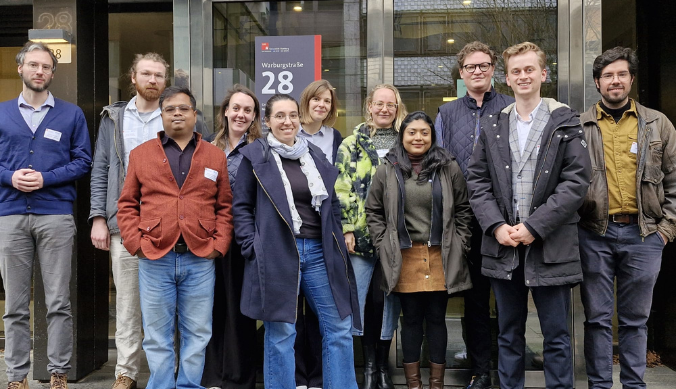Solving chemical and biological problems using theoretical chemistry
The branch of chemistry which fascinates me is the one which deals with decay processes of electronically excited state as well as it’s dissociation mechanism. My research interest is also focused on bio-informatics and computational biology which can shed light on new drug development against cancer disease. Currently, Prof. Aryya Ghosh’s research group mainly focus on two different research objectives at Ashoka University:

Aryya Ghosh
14 June, 2023 | 4m read1. Multimode quantum dynamics simulation for non-radiative decay processes
The enormous recent advances in developing new light sources such as the X-ray Free-Electron Lasers (XFELs) or high harmonic generation (HHG) sources made it possible to image ultrafast molecular reactions, recover structures of proteins at high resolution, or investigate ultrafast electron dynamics in biomolecules.
However, a consistent picture of the interaction between chemical systems and ionizing radiation is impossible without a better understanding of ultrafast electronic decay processes. Such processes taking place in chemical environments such as clusters or solutions remain insufficiently understood due to a number of reasons. On the experimental side, the complicated branching nature of such decay results in observable spectra which cannot be disentangled and assigned to individual decay processes without extensive theoretical modelling. On the theory side, standard computational chemistry methods struggle to represent efficiently the electronic continuum necessary to compute both the energies and widths of the decaying states. Moreover, electronic decay is often accompanied by nuclear dynamics which involve multiple decaying states and are strongly influenced by non-adiabatic effects. Therefore, the accurate simulation of ultrafast electronic decay processes such as Interatomic coulombic decay (ICD), electron transfer mediated decay (ETMD), Auger is highly challenging.
My research work is based on accurate multimode quantum dynamics simulation to simulate the electron spectra as well as kinetic energy release of nuclei spectra of these decay processes which will provide valuable information regarding the ultrafast decay processes and help experimentalists to explain the coincident spectra of decay processes.
2. Drug development against Pancreatic Ductal Adenocarcinoma (PDAC) using bio-informatics as well as molecular dynamics approach
Pancreatic Ductal Adenocarcinoma (PDAC) is a highly malignant disease with very poor clinical outcomes which is primarily due to delayed disease detection and lack of specific targeted therapies. About ~90% of “pancreatic cancers” are caused by the subtype PDAC. By understanding the etiology of the PDAC can detect the genetic profiling that controls the PDAC network.
The advancement in techniques viz. RNA-seq, Microarray, and availability of large data in specific repositories of various diseases lead to a new concept of “Network Medicine”. Therefore, identifying key regulators by systematic Network approach and considering them as drug targets for computer-aided drug design would significantly reduce the time and cost associated with drug development. With this motivation, we are interested to identify novel key regulators in the Pancreatic Ductal Adenocarcinoma disease DEGs network and analyze their interactions with other genes/transcription factors/miRNAs etc. by incorporating network theory using data from dedicated curated databases such as the GEO database. We will be studying the topological properties of the PDAC disease network (gene-gene interaction network).
This study will provide basic topological properties of how signal propagation is done locally as well as globally throughout the network. We are interested to utilize molecular docking, and molecular dynamics simulations to design potential inhibitors for PDAC disease.
(The writer is an Assistant Professor of Chemistry at Ashoka University)
Study at Ashoka













